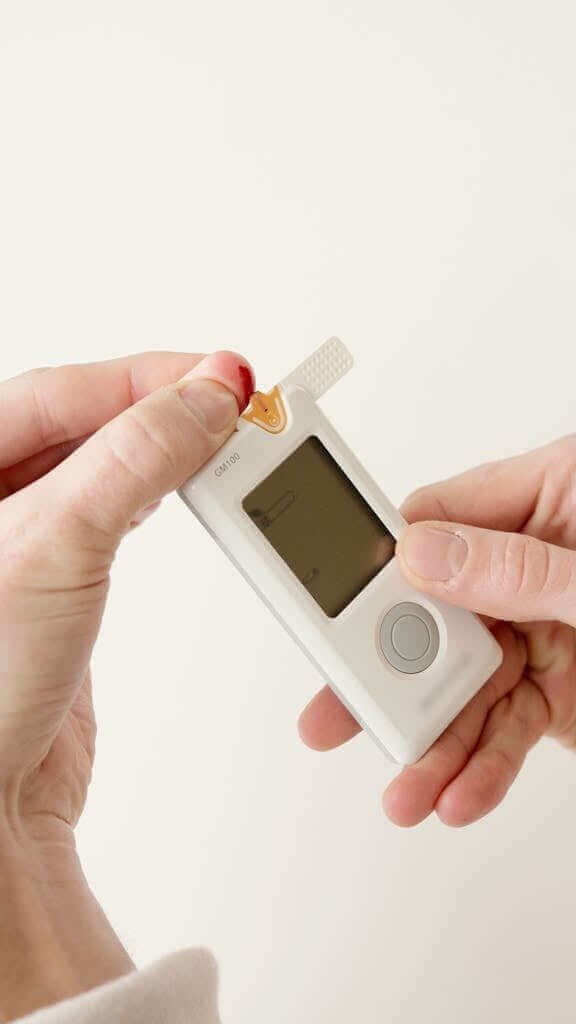Prediabetes in Children: Signs Risks and Prevention
Did you know that approximately 1 in 5 children in the United States has prediabetes? Understanding the signs, risks, and prevention strategies is crucial for safeguarding your child's health and well-being.
From subtle symptoms to long-term complications, being informed about prediabetes in children can make a significant difference in their future.
Stay tuned to discover the early warning signs, potential risks, and proactive steps you can take to prevent prediabetes in your child.
Understanding Prediabetes in Children
If your child exhibits warning signs like frequent thirst and fatigue, understanding prediabetes is crucial in taking proactive steps towards a healthier future. Prediabetes is a condition in which blood sugar levels are higher than normal but not high enough to be classified as type 2 diabetes. It's essential to grasp that prediabetes can be reversed through lifestyle changes such as adopting a healthy diet and increasing physical activity.
Understanding the risk factors associated with prediabetes is key. Factors such as being overweight, having a family history of diabetes, and leading a sedentary lifestyle can increase the likelihood of developing prediabetes in children. By recognizing these risk factors early on, you can work towards preventing the progression to type 2 diabetes.
Regular monitoring of your child's blood sugar levels is also crucial in managing prediabetes. This can be done through routine check-ups with healthcare providers. By staying informed and proactive, you can help your child make the necessary adjustments to lead a healthier life and reduce the risk of developing type 2 diabetes in the future.
Recognizing Signs and Symptoms
Recognize signs and symptoms of prediabetes in children by observing for common indicators like increased thirst and persistent fatigue. If your child seems thirstier than usual, even after drinking plenty of fluids, it could be a sign of prediabetes.
Pay attention if they frequently complain of feeling tired or drained, as persistent fatigue can be a symptom. Keep an eye out for unexplained weight loss or gain, as well as increased hunger, especially after meals.
Children with prediabetes may experience blurred vision or darkened areas of skin, like around the neck or armpits. Additionally, frequent urination, especially during the night, can be a red flag.
If you notice these signs, it's essential to consult a healthcare provider for proper evaluation and testing. Early detection and management of prediabetes in children can help prevent the progression to type 2 diabetes.
Assessing Risks and Complications
To effectively manage prediabetes in children, it's crucial to assess the potential risks and complications associated with the condition. Prediabetes increases the risk of developing type 2 diabetes, heart disease, and other serious health issues if left unmanaged. Children with prediabetes may also experience complications such as high blood pressure, abnormal cholesterol levels, and fatty liver disease.
Assessing the risks and complications involves monitoring the child's blood sugar levels regularly, as well as keeping track of their weight, diet, and physical activity. Understanding family medical history is essential in evaluating the child's predisposition to prediabetes and related conditions. Additionally, healthcare providers may conduct tests to assess cardiovascular health, kidney function, and other potential complications associated with prediabetes.
Implementing Prevention Strategies
Implementing preventive measures is key to managing prediabetes in children effectively. One of the most crucial strategies is ensuring regular physical activity. Encouraging your child to engage in at least 60 minutes of moderate to vigorous exercise daily can significantly lower the risk of developing prediabetes.
Additionally, focusing on a balanced diet plays a vital role in prevention. Limiting sugary drinks and foods high in saturated fats while increasing the intake of fruits, vegetables, whole grains, and lean proteins can help maintain a healthy weight and regulate blood sugar levels.
As a parent, leading by example is essential; creating a supportive environment at home that promotes healthy eating habits and active lifestyles can positively influence your child's choices.
Regular health check-ups are also important for early detection and monitoring of prediabetes. By proactively implementing these prevention strategies, you can empower your child to lead a healthier life and reduce the risks associated with prediabetes.
Promoting Healthy Lifestyle Habits
Encourage your child to embrace healthy lifestyle habits to prevent the onset of prediabetes and foster overall well-being. Start by emphasizing the importance of regular physical activity. Encourage your child to engage in at least 60 minutes of moderate to vigorous exercise daily. Limit sedentary activities like excessive screen time to promote movement throughout the day.
Additionally, focus on a balanced diet rich in fruits, vegetables, whole grains, lean proteins, and low-fat dairy products. Encourage your child to drink plenty of water and limit sugary beverages and snacks. Be a positive role model by making healthy food choices and involving the whole family in meal planning and preparation.
Prioritize regular sleep to support your child's overall health. Aim for consistent bedtimes and create a calming bedtime routine. Lastly, promote stress-reducing activities like mindfulness, yoga, or hobbies your child enjoys.
Frequently Asked Questions
Can Children Outgrow Prediabetes on Their Own Without Any Intervention?
You might wonder if children can overcome prediabetes without help. The answer varies. Lifestyle changes, like healthier eating and exercise, can often improve the condition. Consulting a healthcare provider is recommended for personalized guidance.
Are There Any Specific Genetic Factors That Increase a Child's Risk of Developing Prediabetes?
Certain genetic factors can elevate a child's predisposition to developing prediabetes. Factors such as family history, ethnicity, and specific gene variations can increase the risk. It's essential to be aware of these influences for proactive health management.
How Often Should Children With Prediabetes Have Their Blood Sugar Levels Monitored?
You should monitor your child's blood sugar levels regularly if they have prediabetes. This helps track progress, guide treatment, and prevent complications. Follow your healthcare provider's guidance on frequency for a proactive approach to managing their condition.
Are There Any Specific Dietary Supplements That Can Help Prevent Prediabetes in Children?
To help prevent prediabetes in children, focus on a balanced diet rich in fruits, vegetables, and whole grains. Regular physical activity is key. While supplements can be beneficial, consult a healthcare provider for personalized recommendations.
Can Children With Prediabetes Participate in All Types of Physical Activities, or Are There Restrictions to Consider?
You can involve children with prediabetes in various physical activities, but it's essential to consider their individual health status and any restrictions recommended by healthcare providers. Always prioritize their safety and well-being.
Conclusion
Now that you know the signs, risks, and prevention strategies for prediabetes in children, it's time to take action. Don't wait until it's too late to make a change.
Remember, prevention is always better than cure. So, grab the bull by the horns and start implementing healthy lifestyle habits today to steer clear of the prediabetes storm brewing on the horizon.





